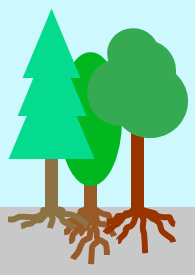Experimental Population and Community Ecology
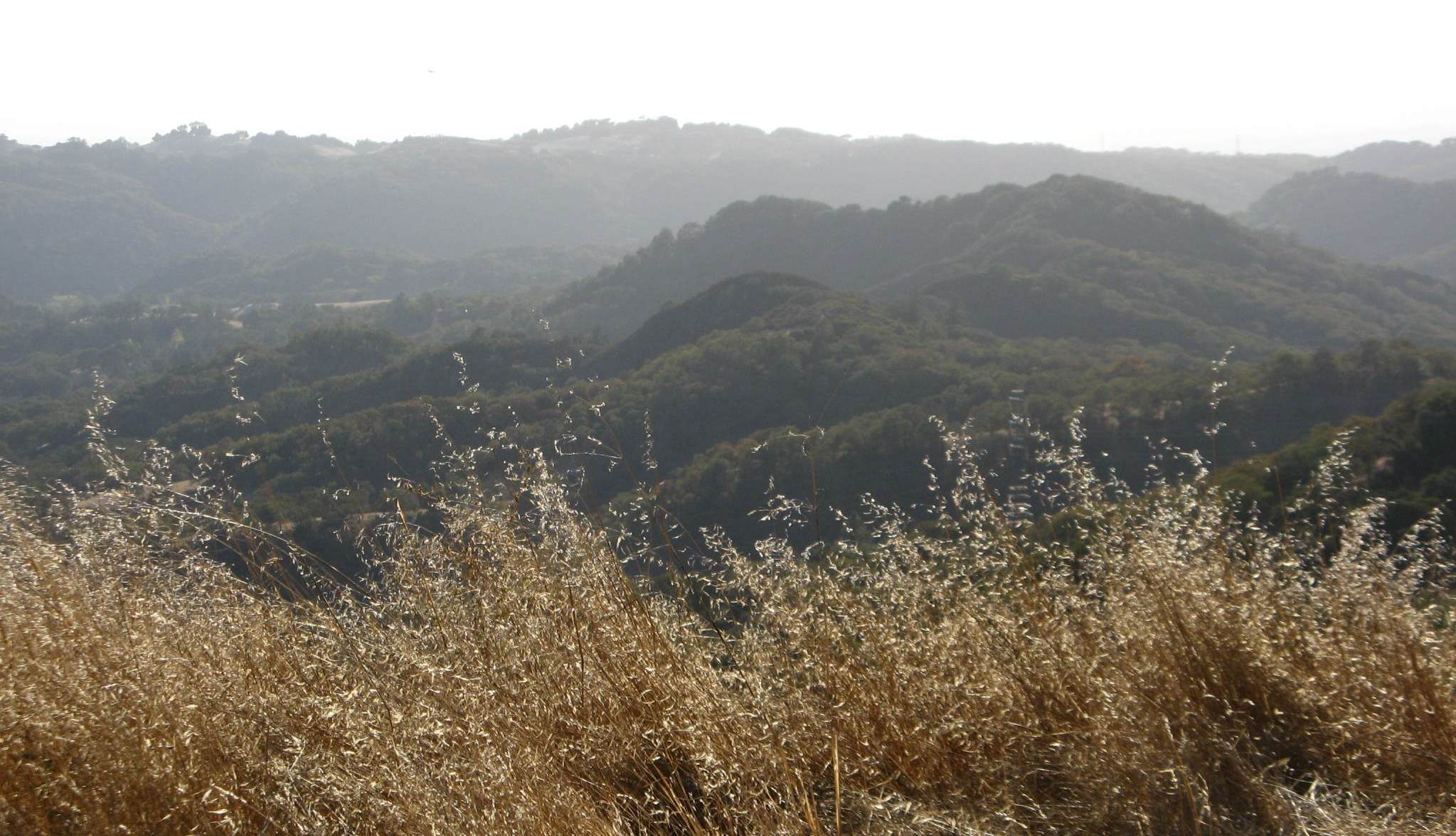
Welcome to our research group! We are plant population and community ecologists interested in a broad range of topics, including the importance of micro-evolutionary processes for ecological dynamics, and the role of ecological interactions for species coexistence and the functioning of terrestrial ecosystems. We are particularly interested in how anthropogenic drivers like land management, climate change, or invasions by exotic species influence micro-evolutionary processes and species interactions. To study these processes, we use manipulative experiments in the greenhouse, in the common garden, on experimental fields and even in real ecosystems, and employ quasi-experimental approaches that make use of existing environmental gradients across landscapes.
Rapid evolutionary change and invasive success
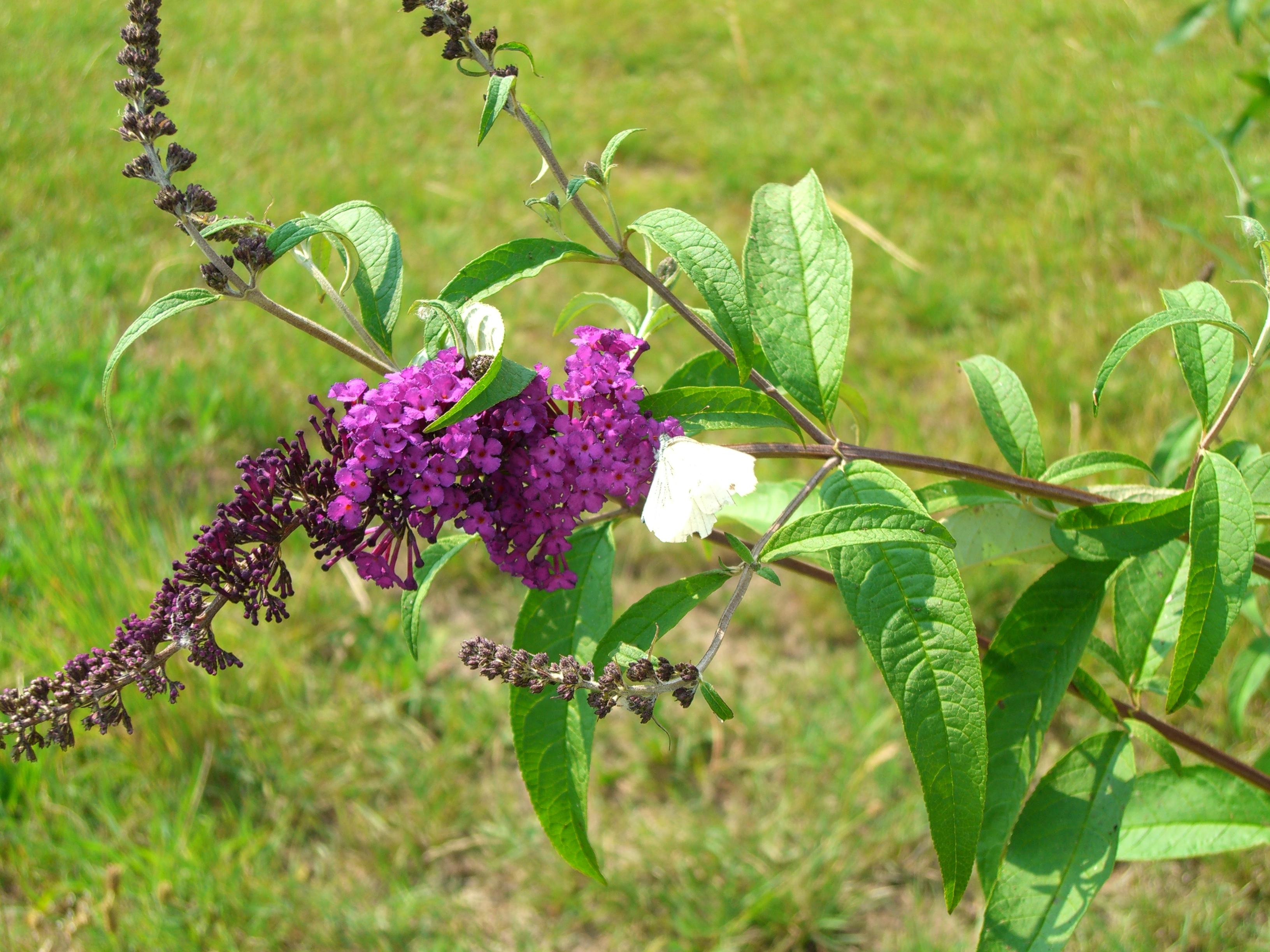 The invasive butterfly bush (Buddleja davidii) © Susanne Schreiter
The invasive butterfly bush (Buddleja davidii) © Susanne Schreiter
It has been hypothesized that one cause for the invasive success of exotic species is their potential for rapid evolutionary responses to the novel environments they encounter. However, genetic bottlenecks associated with introduction into a new geographic range may hamper adaptive evolution. We therefore investigated the role that introduction from multiple source populations and subsequent hybridization can play for creating novel genetic variation in introduced plant species (Durka et al. 2005). Besides unintentional introduction and spontaneous hybridization, both processes can also occur deliberately by plant breeding (Ross et al. 2008, Ebeling et al. 2011). If sufficient genetic variation is available as “raw material” for selection to act upon, adaptive evolution in response to varying climatic and soil conditions, or to a reduced impact of natural enemies may occur in the invaded area (Bossdorf et al. 2005). In the past, we used the invasive herb Alliaria petiolata (Bossdorf et al. 2004), and the invasive ornamental shrubs Mahonia aquifolium (Ross et al. 2008, 2009) and Buddleja davidii (Ebeling et al. al 2008, 2012) as model plants to study these relationships. More recently, we investigated the herb Ageratina adenophora, native in Central America and invasive in Asia as well as other parts of the world, as a study system (Datta et al. 2017).
Evolutionary responses to climate change and land use
Common garden experiment with Arrhenaterum elatius © Eva Völler
Rapid adaptive evolution of native plant species may buffer against the ecological impact of, e.g., changed climatic conditions or land-use intensity, thereby contributing to population persistence. Grasslands represent an important land-use type in Central Europe, harbor a large biodiversity, and are subject to changes in land-use intensity. We have therefore focussed on grassland species to investigate the importance of micro-evolutionary responses to climate and land-use change. In the past, we investigated the evolutionary potential of grassland plants in response to elevated atmospheric carbon dioxide concentrations (Wieneke et al. 2004), to climatic conditions (Weißhuhn et al. 2011, 2012), and to changed land-use intensity (Völler et al. 2013, 2017). In these projects, we collaborated with colleagues from University of Basel and University of Berne. Currently, we collaborate with the Department’s population genetic lab to study micro-evolutionary responses of grassland plants to climate change under different land-use scenarios, using the Global Change Experimental Facility (GCEF) at the UFZ Field Experimental Station in Bad Lauchstädt as an experimental platform.
Role of consumers and pathogens for plant community dynamics
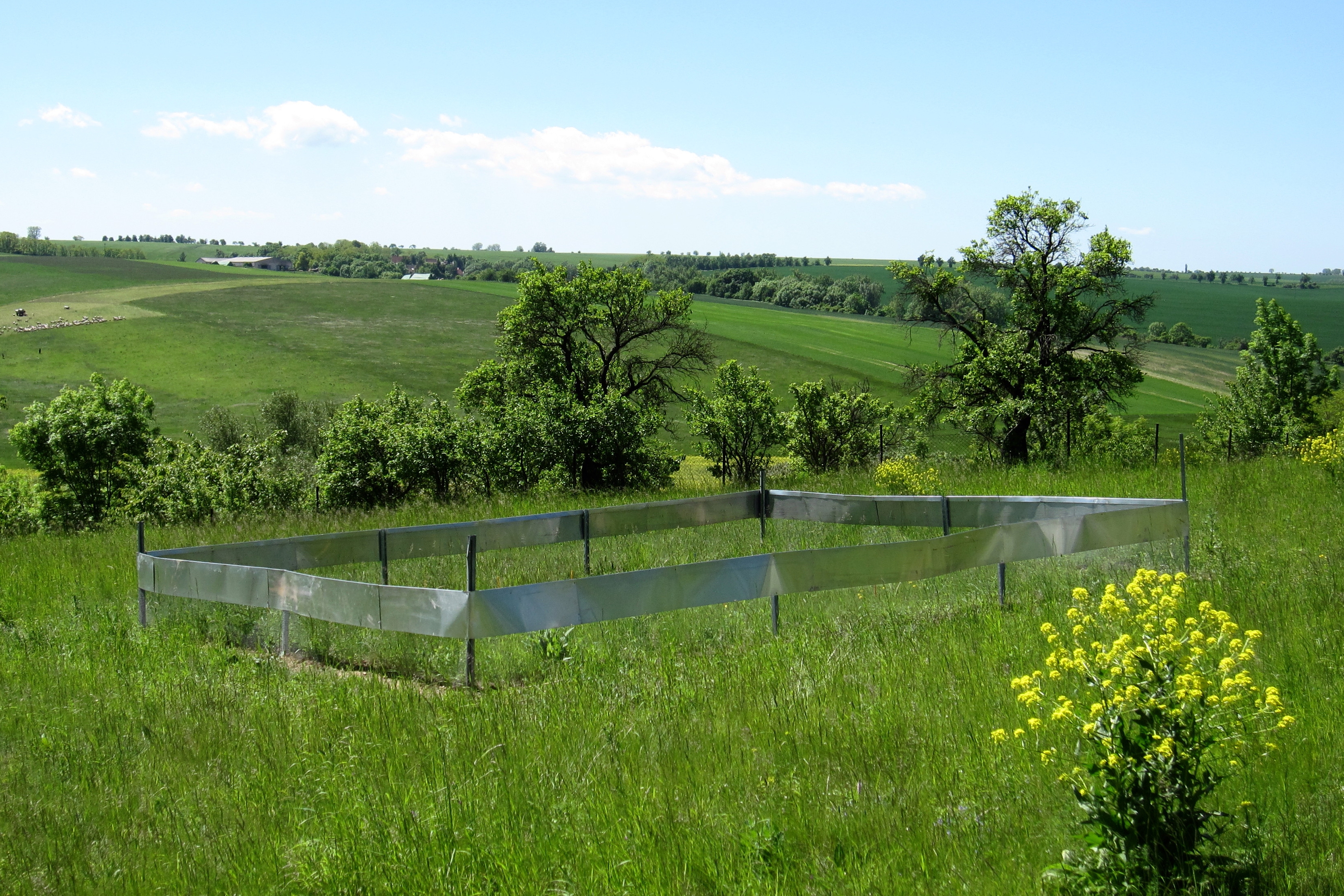 Grassland with rodent exclosure (in the foreground: the invasive perennial, Bunias orientalis)
Grassland with rodent exclosure (in the foreground: the invasive perennial, Bunias orientalis)
Another major focus of our research is on species interactions and plant community dynamics. In particular, we are interested in the role that mutualistic interactions (with mycorrhizal fungi: Stein et al. 2009) and, in particular, antagonistic interactions (with pathogens, herbivores) play for plant community dynamics, primary production and plant diversity (Schädler et al. 2003, 2004; Stein et al. 2010). How do plant antagonists mediate coexistence between plant species, and what is their importance for invasion success of exotic species? Using field and greenhouse experiments, we have studied the role that generalist herbivores such as rodents and gastropods play for plant community assembly, exotic plant invasions and primary production of grasslands (Korell et al. 2016, 2017). Currently, we explore how insect herbivores and fungal pathogens contribute to negative frequency-dependence among plant species (Schmidt et al. 2020a), as well as to plant-soil feedbacks and to priority effects in native versus exotic-dominated grassland communities. In part, these studies have been carried out together with collaborators in North America to assess the generality of results across different regions, climates and species pools (Williams et a. 2010; Maron et al. 2014; Korell et al. 2016; Schmidt et al. 2020b).
Impact of climate change and land use on grassland ecosystems
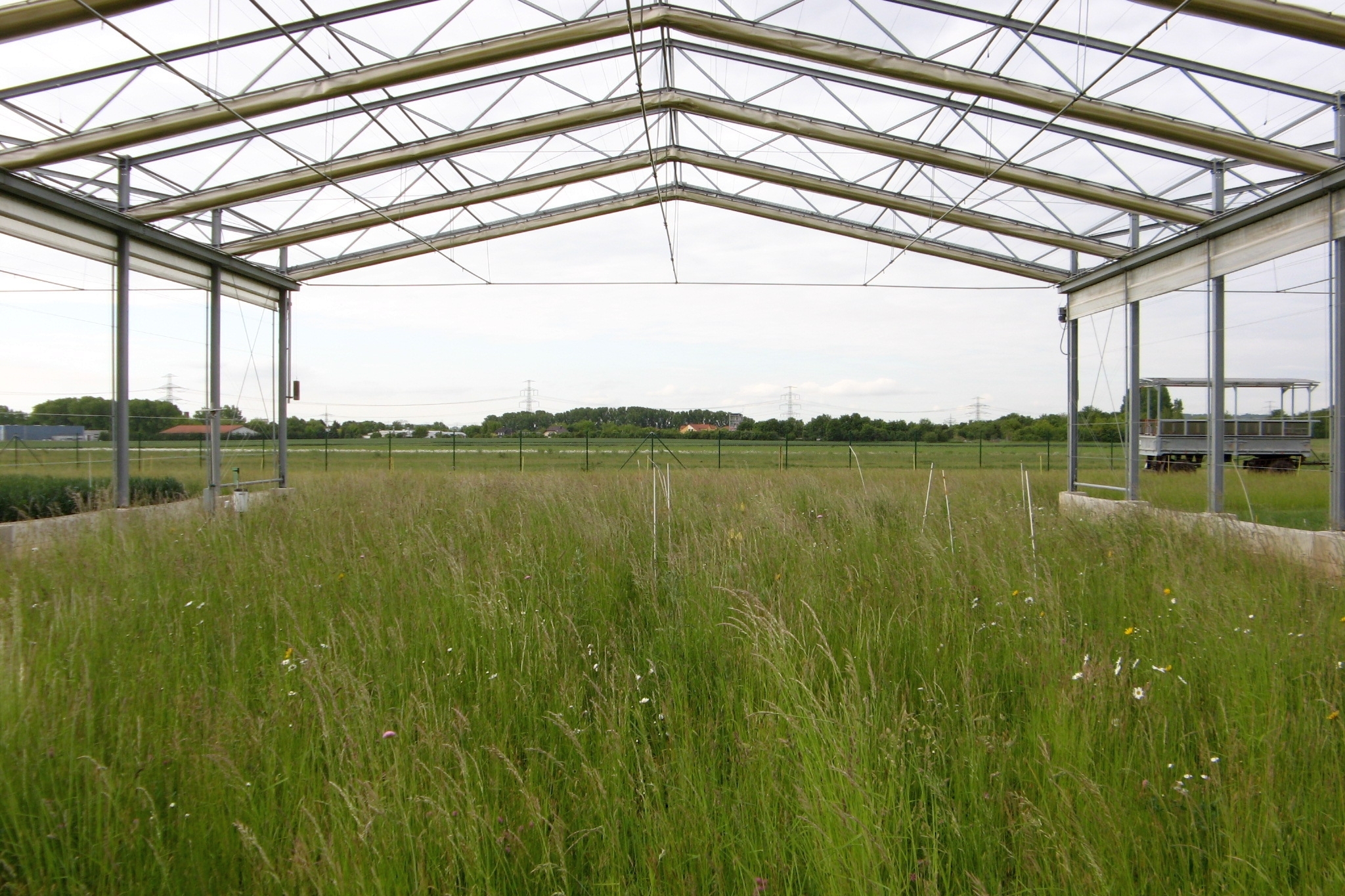 The Global Change Experimental Facility with species-rich meadow
The Global Change Experimental Facility with species-rich meadow
In newly started research projects, we are studying how man-made environmental changes impact plant community dynamics: How does species diversity, species composition and primary production of grassland communities respond to climate change under different management regimes? How are plant community responses to climate change modified, or mediated, by interactions with antagonists such as vertebrate grazers, insect herbivores and fungal pathogens? In addition, we collaborate with the Department of Physiological Diversity in a project to explore the importance of light competition for plant community responses to grazing, eutrophication and climate change (Jessen et al. 2022, 2023), and with several working groups at iDiv to synthesize experimental results on responses of plant diversity to climate change (Korell et al. 2020a,b, 2021). Many of the studies deploy the Global Change Experimental Facility (GCEF) as an experimental platform (Schädler et al. 2019; Korell et al. 2024). These studies are complemented by a DroughtNet site nearby, that is maintained in collaboration with iDiv’s Experimental Interaction Ecology (Siebert et al. 2019) and contributes to global syntheses of ecosystem responses to drought (Smith et al. 2024).
Effects of plant diversity and ecosystem functioning
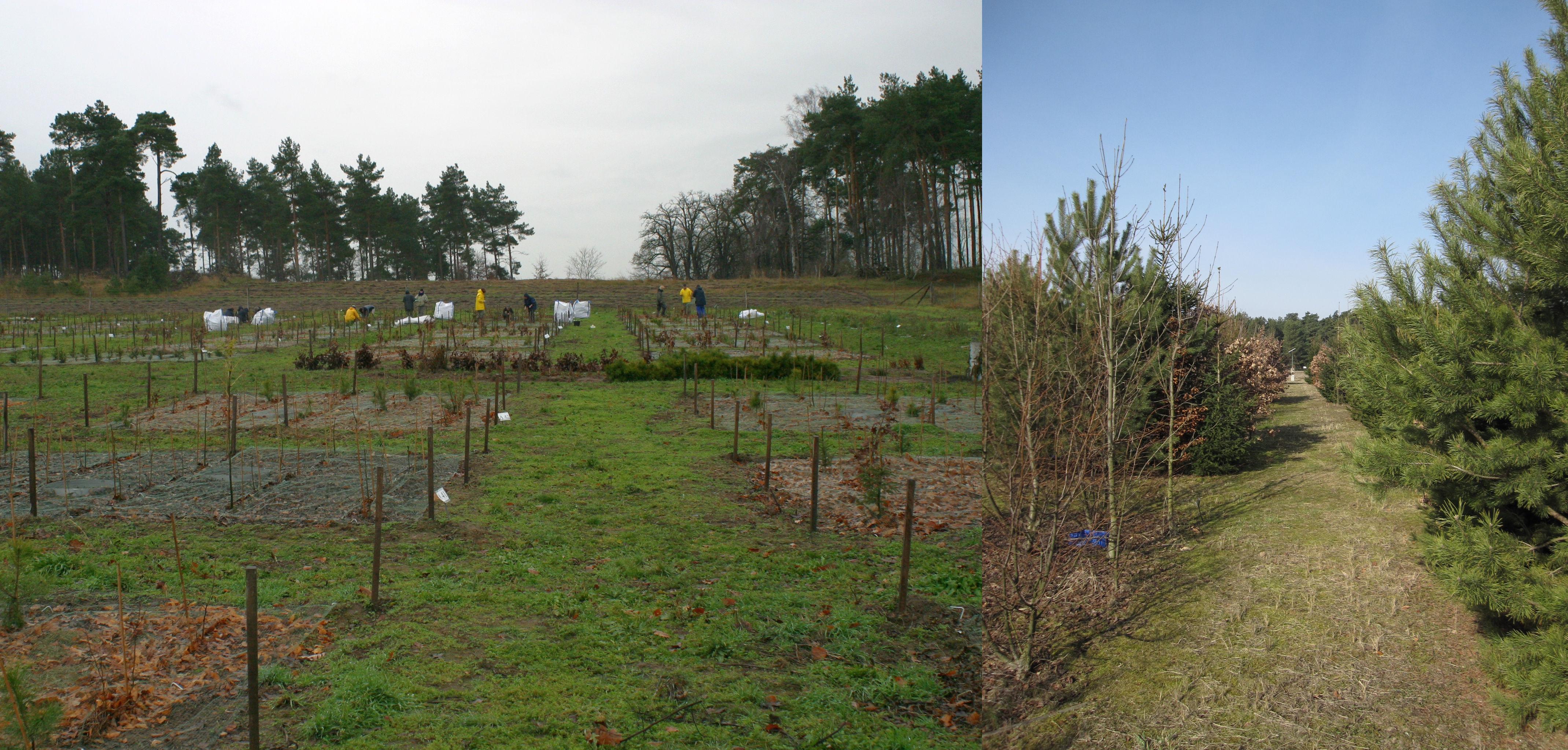 The Kreinitz Tree Diversity Experiment in 2006 (left) and 2013 (right)
The Kreinitz Tree Diversity Experiment in 2006 (left) and 2013 (right)
One of the most prominent ecological questions for the past two decades has been how biodiversity affects the functioning of ecosystems. So far, most research in this context has been done using experimental grassland ecosystems, where species richness or functional diversity is manipulated. In a complementary approach, we performed manipulative experiments in real-world ecosystems to study the importance of dispersal limitation for community assembly and ecosystem functions (Stein et al. 2008; see also Bannar-Martin et al. 2018; Ladouceur et al. 2020). Only in the 2000s, first experiments were set up to study the importance of tree species diversity for ecosystem processes. Already in 2005, we established the Kreinitz experiment to investigate how richness of native European timber species affects the functioning of temperate forest ecosystems. Together with collaborators from iDiv, University of Alberta at Edmonton, Martin-Luther University Halle, and various other institutions we are interested in diversity effects on stand productivity, on above-ground herbivory and pathogen attack, on soil microbial communities and litter decomposition, and on other ecological processes (e.g. Hantsch et al. 2014; Alalouni et al. 2014; Schwarz et al. 2015; Wurst et al. 2015; Gottschall et al. 2022, 2023; Proß et al. 2024; Shovon et al. 2024). The Kreinitz experiment is part of TreeDivNet – the global network of tree diversity experiments (Verheyen et al. 2016) – which in the meantime covers more than 30 experiments distributed across all continents (except Antarctica). TreeDivNet represents a co-ordinated, globally distributed approach that allows generalizations about the importance of tree diversity for ecosystem functioning (e.g. Paine et al. 2015; Guerrero-Ramirez et al. 2017; Djukic et al. 2018; Depauw et al. 2024).



